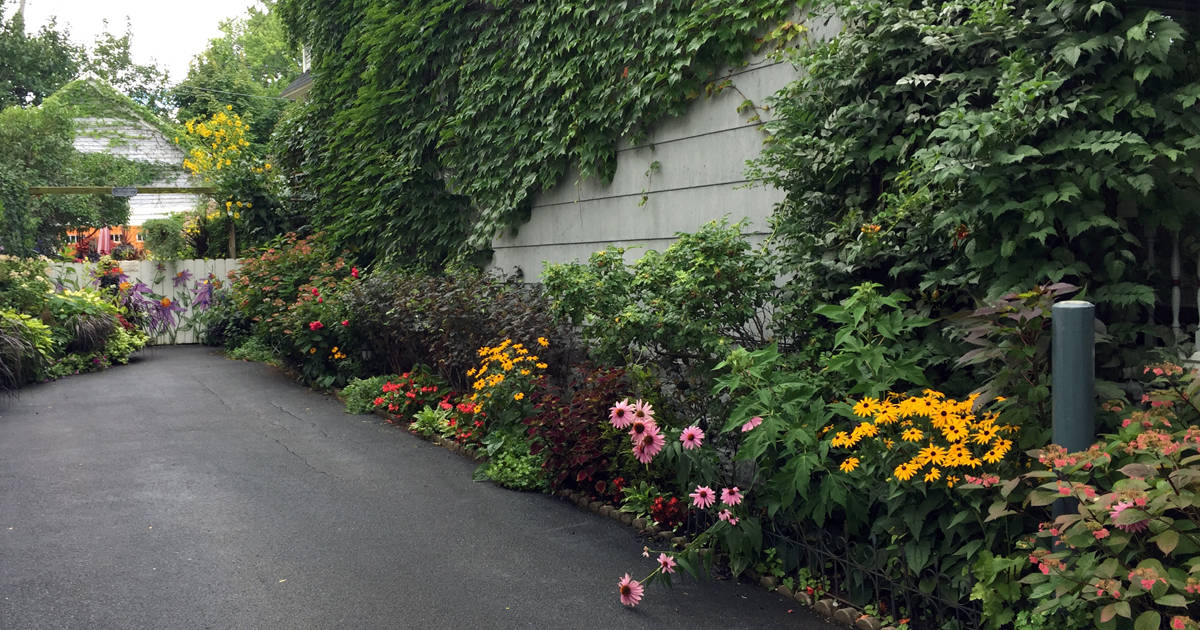Top Guidelines Of Hilton Head Landscapes
Table of ContentsGetting My Hilton Head Landscapes To WorkOur Hilton Head Landscapes StatementsThe Main Principles Of Hilton Head Landscapes Hilton Head Landscapes Things To Know Before You Get ThisHilton Head Landscapes - An OverviewThe Only Guide to Hilton Head LandscapesGetting The Hilton Head Landscapes To Work
Line creates all forms and patterns and can be used in a range of ways in the landscape. Line in the landscape is produced by the edge between 2 materials, the rundown or silhouette of a type, or a lengthy linear attribute. Lines are an effective tool for the designer due to the fact that they can be used to produce an unlimited range of forms and types, and they manage motion of the eye and the body.

Lines can have one or more qualities, such as those described listed below, yet they generally offer various purposes. Number 1. Lines in the landscape - landscape design hilton head. The residential properties of lines figure out just how individuals reply to the landscape, both emotionally and physically. Straight lines are architectural and strong; they create a formal character, are normally connected with an in proportion layout, and lead the eye directly to a prime focus.
About Hilton Head Landscapes
Bent lines create an informal, natural, loosened up character that is connected much more with nature and asymmetrical equilibrium. Rounded lines relocate the eye at a slower pace and include mystery to the area by creating concealed views.
Upright lines in the landscape include tall, narrow plant material, such as trees, or tall frameworks, such as an arbor or a bird home on a pole. Horizontal lines relocate the eye along the ground airplane and can make a room really feel bigger. Low lines are a lot more suppressed and produce a feeling of rest or repose.
Top Guidelines Of Hilton Head Landscapes
Reduced lines are developed by reduced yard walls, walkways, and brief bushes. Lines are utilized to draw forms on a strategy. In strategy sight, they define plant beds and hardscape locations. Lines are additionally produced by the vertical forms of built attributes and plant product. There are 3 primary line kinds that develop kind in the landscape: bedlines, hardscape lines, and plant lines.
Bedlines connect plant product to your home and hardscape because the eye follows the line, relocating the stare through the landscape. Hardscape lines are created by the edge of the hardscape, which delineates the constructed framework. Line can likewise be created by lengthy and slim products, such as a fencing or wall.
Hilton Head Landscapes Can Be Fun For Anyone
Type is found in both hardscape and plants, and it is commonly the leading visual aspect that spatially organizes the landscape and often identifies the design of the garden. The type of frameworks, plant beds, and yard ornaments additionally determines the general kind style of the garden. Formal, geometric forms consist of circles, squares, and polygons.
Plants produce kind in the yard with their details or silhouettes, but type can additionally be specified by a space or negative area between plants - landscape design hilton head (https://www.storeboard.com/hiltonheadlandscapes). Circles can be cycles, or they can be split into fifty percent circles or circle sectors and incorporated with lines to create arcs and tangents
See This Report on Hilton Head Landscapes
Circles can additionally be stretched into ovals and ellipses for even more range and passion. Circles are a strong design form since the eye is always attracted to the facility, which can be utilized to emphasize a prime focus or connect various other forms. Number 2. Round kinds in hardscape and grass panels.
The square form can additionally be fractional and secondhand consistently to create a grid pattern. Unlike circles, squares are stronger on the brink, which can be aligned or overlapped to create distinct patterns and more intricate kinds. Polygons are many-sided kinds with straight edges. Triangulars, for instance, are click over here now three-sided polygons.
Twisting lines frequently simulate the all-natural training course of rivers or streams and can be referred to as smooth lines with deeply curved undulations. Meandering lines (Number 3) function well for paths, plant bedlines, and dry stream beds. Meandering lines can add rate of interest and secret to a garden by leading viewers around edges to uncover new sights and rooms.
Hilton Head Landscapes - Questions

Typical plant forms are well established and standardized, as type is the most regular and identifiable characteristic of plants. Form can additionally be created via the massing of plants, where the total mass produces a various form than a specific plant.
A very different form has to be used with careone or more job well as a prime focus, yet a lot of wreak havoc. All-natural plant kinds, instead than over-trimmed forms, ought to establish the bulk of the composition. The significance of total type is basically reliant on the viewing perspectivethe form of a tree can appear fairly different to an individual standing under the cover versus viewing the tree from a distance in an open field.
Hilton Head Landscapes - The Facts
Plant forms likewise develop and specify deep space or open spaces between the plants, producing either convex or concave types in deep spaces. High-arching tree branches generally develop a concave open room under the branches, and a rounded cover with reduced branches fills up the area to produce a convex kind outdoors room under the tree.
